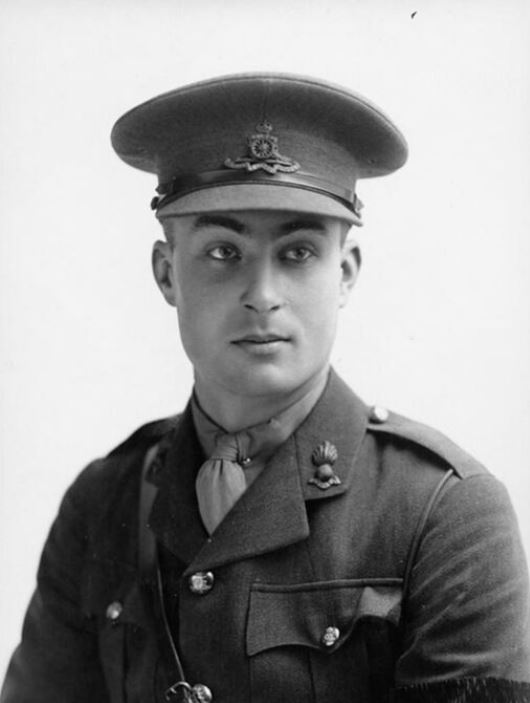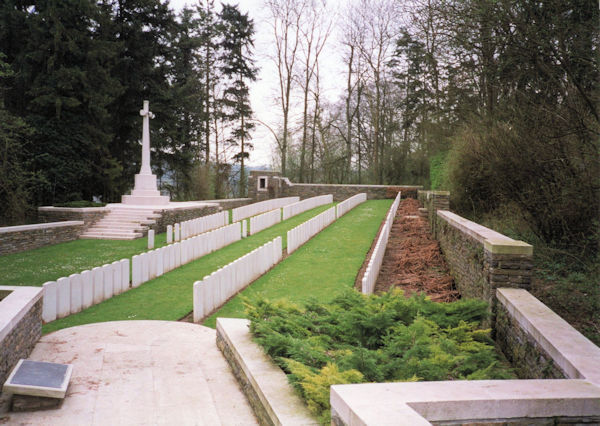Name
David Henry Ainsworth Cranston Simson
13 September 1898
Conflict
First World War
Date of Death / Age
18/09/1918
20
Rank, Service Number & Service Details
Second Lieutenant
Royal Field Artillery & Royal Horse Artillery
111th Battery, 24th Brigade
Awards: Service Medals/Honour Awards
British War and Victory medals
Cemetery/Memorial: Name/Reference/Country
TREFCON BRITISH CEMETERY, CAULAINCOURT
D.62
France
Headstone Inscription
FAITHFUL UNTO DEATH I WILL GIVE THEE A CROWN OF LIFE
UK & Other Memorials
St Katherine’s Church Memorial, Ickleford,
Northaw Place School Memorial, West Tytherley, Hampshire,
Harrow School - WW1 Shrine, London
Pre War
David Henry Ainsworth Cranston Simson was born in Buenos Aires, Argentina on 13 September 1898 and baptised at San Pedro, Flores on 29 October 1898. He was the only child of Lydia Grissell Kelsall and David Simson (former manager of the Buenos Aires Western Railway and former Chairman of the Buenos Aires Great Southern Railway).
He came back to England with his mother in 1902 from La Plata to Southampton on the "Wittekind" On the 1911 Census he was a schoolboy living at Northaw Place preparatory school, Nr Cuffley, Herts, while his parents (with 7 servants) were living at Ickleford Manor, Hitchin. David was then educated at Harrow School.
(His father died in December 1916 and his mother later lived at 25 Coates Gardens, Edinburgh.)
Wartime Service
After leaving Harrow School, David enlisted into the army and trained at the Royal Military Academy in Woolwich from 1916.
He was named on the military lists for 1917 and 1918 as 2nd Lieutenant with the Royal Artillery and went to France with his Battery in October 1917.
During the Battle of St Quentin he was acting as Forward Observing Officer and was wounded in the thigh on 8 September 1918. He refused to crawl back to safety saying that if he rested he could still go on. He continued observing and sending messages for two hours, after which his signaller returned to the Battery to get a stretcher. When the search party returned they could find no trace of him, and it was not until ten days later that he was found some distance off with a shrapnel wound in the head and his map beside him. It seems he must have struggled on to get more and better information when he was killed by the bursting of a shell. His body was taken back to the Battery and buried in the Trefcon Military Cemetery, France. He was killed only five days after his 20th birthday,
After his death his Colonel, Major and Captain all wrote to his family commenting on his qualities as an officer, but the following is a quotation from his servant who wrote "Mr Simson always thought more of his duty than of his life ..... He was the best Officer in the whole Battery, the most pleasant and gallant that we had, and we all miss him terribly, He talked to us as no one else ever did, and the remembrance of what he said will remain with us all our lives. Only for that smile of his the boys would have given their lives. He was the coolest Officer too under shell fire that I ever I saw, and when we went out with him we always felt safe. Everyone in the Battery had a good word for him, and I heard them all say they had lost their best Officer."
Additional Information
His mother, Mrs Lydia Grissell Simson, 25 Coates Gardens, Edinburgh, received a war gratuity of £35.00 and pay owing of £4 7s. Probate was granted to her on 12 September 1919 with effects of £657 16s 3d. She also ordered his headstone inscription: "FAITHFUL UNTO DEATH I WILL GIVE THEE A CROWN OF LIFE".
A newspaper article dated 19 October 1918, recorded that father and son both had a passion for engineering and during David's childhood his father had constructed a perfect miniature railway in the grounds of the manor. [Ickleford]
Acknowledgments
Brenda Palmer
Brenda Palmer, Roll of Honour.com, of Argentine Railways, www.iwm.org.uk, Susan Kelshall



